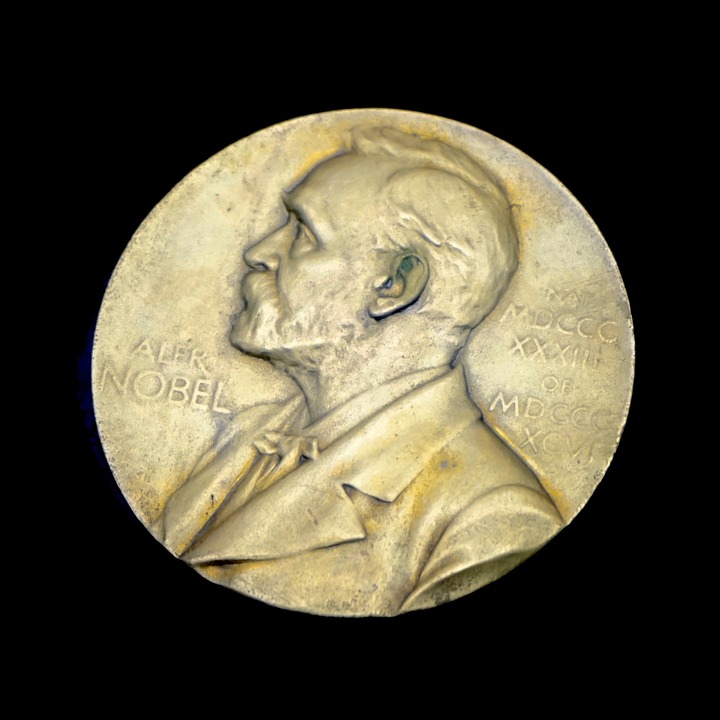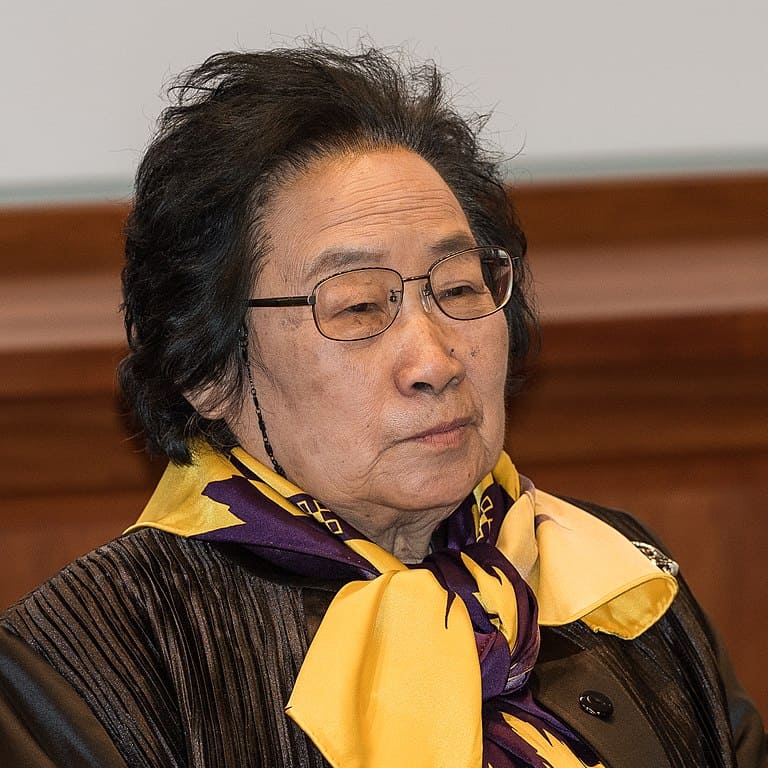
Image by WikiImages from Pixabay
Top 10 Amazing Facts about Tu Youyou
Tu was born in Ningbo, a port city about 140 miles south of Shanghai, on 30 December 1930. Her name came from the Book of Songs, poetry by Confucius.
Tu Youyou is a Chinese pharmaceutical chemist and malariologist. She discovered artemisinin used to treat malaria, a breakthrough in twentieth-century tropical medicine, saving millions of lives in South China, Southeast Asia, Africa and South America.
Tu chose medicine, not philosophy when she left Zhejiang and headed to China’s capital to further her studies in 1951.
She enrolled at the Peking University School of Medicine and graduated from its Department of Pharmacology.
From university Tu enrolled in the Academy of Traditional Chinese Medicine.
Tu was recruited to a top-secret medical research project known only as “523”.
She turned to Chinese medical texts from the Zhou, Qing and Han Dynasties to find a traditional cure for malaria ultimately extracting the compound artemisinin.
When she isolated the ingredient she believed would work, she volunteered to be the first human subject.
She is married to Li Tingzhao, a former school classmate and factory worker with whom they have two daughters in Beijing.
Continue reading the article to learn amazing facts about Tu Youyou.
1. Tu Youyou Discovered the Cure for Malaria

Image by Xinhua News agency from Wikimedia
Tu had a divergent idea from other scientists were busy screening thousands of compounds with no success.
She screened herbs found in traditional Chinese medicine an area that had not been looked at in the context of malarial medicine.
Her research team screened over 2,000 traditional Chinese recipes and made 380 herbal extracts.
In the course of her research, she found one compound that proved to be effective: artemisinin.
The sweet wormwood (Artemisia annua) plant produces the compound which had previously been used for “intermittent fevers,” one of malaria’s main symptoms.
Tu was not successful at first, as her team had attempted to extract the active ingredient from the herb.
In 1973, as a result of an attempt to confirm if the carbonyl group exists in the chemical structure of the artemisinin molecule, she accidentally synthesized dihydroartemisinin.
Artemisinin-based drugs have improved millions of people’s health and survival.
2. Tu Youyou trained in Both Modern and Traditional Medicine
Tu attended Peking University Medical School from 1951-55 after completing her schooling in Ningbo. She studied at the Department of Pharmaceutical Sciences during her time at university.
She trained in traditional Chinese medicine for two and a half years after university.
Immediately after graduation, Tu sought employment at the Academy of Traditional Chinese Medicine (now the China Academy of Traditional Chinese Medical Sciences in Beijing).
In 1980, she was promoted to Researcher (equivalent to the academic rank of a full professor in other countries).
In 2001 she was promoted to an academic advisor for doctoral candidates, currently, she is the Chief Scientist in the Academy.
Despite having no postgraduate degree, no international research experience and not being a member of the Chinese National Academies, she managed to make a significant contribution to the treatment of malaria to this date.
3. Tu Youyou Volunteered as the First Human Subject for her Research

Image by Vladimir Berzin from Pixabay
A single-cell parasite causes severe fever known as Malaria.
In the 1970s, after studies of traditional herbal medicines, Tu Youyou focused on sweet wormwood and managed to extract a substance, artemisinin, which inhibits the malaria parasite.
Tu also volunteered to be the first human subject to establish the safety of the anti-malarial compound she had extracted for human beings.
Tu and two colleagues tested the substance on themselves before testing them on 21 patients in the Hainan Province. All of them recovered.
Successful clinical trials were conducted after establishing its safety. Initially, her work was published anonymously, but in 1981, she presented the findings relating to artemisinin at a meeting with the World Health Organization (WHO).
Tu also discovered the chemical structure and studied the biological activity of artemisinin extensively.
4. TB infection pushed her to Study Medicine
She attended Xiaoshi Middle School for junior high school and the first year of high school, before transferring to Ningbo Middle School in 1948.
Her family stressed education for her and her four brothers, but she had to take a two-year break from studying at 16 because she had contracted tuberculosis.
When she returned to school, she knew exactly what she wanted to study: medicine. She wanted to find cures for diseases like the one that had afflicted her.
Tu Youyou’s first triumph over an infectious disease was her recovery from tuberculosis as a teenager, an experience that inspired her to pursue a career in medicine.
5. Chairman Mao Zedong Requested her to Lead Project 523

Image by Zhang Zhenshi from Wikimedia
In 1967, during the Vietnam War, North Vietnam requested China to help battle malaria, which was affecting its soldiers.
North Vietnam asked China for help with battling malaria, which was causing tremendous casualties among its soldiers in the Vietnam War.
The single-celled parasite that causes malaria had become resistant to chloroquine, the standard malaria treatment.
Chairman Mao Zedong launched Project 523 on 23 May 1967 to find a cure for chloroquine-resistant malaria.
Tu led Project 523, a secret effort to discover a treatment for malaria. Tu and her team pored over ancient Chinese medical texts to identify plants with appropriate medicinal value.
The target was to rid malaria-causing Plasmodium parasites from the blood of infected people.
6. Tu Youyou is a Nobel Laurette

Image by Florian Pircher from Pixabay
Tu Youyou is a Chinese scientist, known for her isolation of the antimalarial substance artemisinin also won the 2015 Nobel Prize for Physiology or Medicine.
Irish-born American parasitologist William Campbell and Japanese microbiologist Omura Satoshi also shared the prize.
Tu’s group discovered that the plant artemisia annua, sweet wormwood, showed substantial inhibition of rodent malaria parasites.
When she won the Nobel, Tu became the first Chinese Nobel laureate in physiology or medicine.
She was the first female citizen of the People’s Republic of China to receive a Nobel Prize in any category.
In 2011 she received the Lasker-DeBakey Clinical Medical Research Award for her contributions to the discovery of artemisinin.
Her award has led to a heated discussion about scientific research investment, fair treatment of research staff, and intellectual property rights (IPR) protection in China.
7. Tu’s Achievements Raised the Profile of Chinese Traditional Medicine

Sweet wormwood Image by People in Jietu from Pixabay
Tu, for her part, was reluctant to take credit. “I do not want fame,” she said. She deflected praise toward her colleagues from modern as well as ancient China.
When she accepted the 2015 Nobel Prize in Physiology or Medicine, her lecture was entitled, ‘Discovery of Artemisinin: A Gift from Traditional Chinese Medicine to the World.’
But she was clearly proud of her discovery. “Every scientist dreams of doing something that can help the world
Earlier, Tu has described her team’s findings, published in English in 1979, as “a gift from traditional Chinese medicine to the world.”
The discovery is significant to humanity as it laid an important ground in the battle against one of history’s deadliest diseases.
Her achievement and experience have inspired other researchers and emphasized the development of traditional Chinese medicine.
Further, she did so without a doctorate, a medical degree or training abroad.
Youyou Tu, a female scientist at the China Academy of Traditional Chinese Medicine in Beijing, is the first Chinese winner of the Nobel Prize in Physiology or Medicine.
8. It Took 2 Decades for WHO to embrace the Drug

Artemisinin-based combination Malaria therapies (ACTs). Image by President’s Malaria Initiative from Wikimedia
The Chinese Medical Journal published her work in English in 1979. However, the findings were met with scepticism.
The World Health Organisation invited Tu to present her findings on the global stage in 1981.
It took two decades, but finally, the WHO recommended artemisinin combination therapy as the first line of defence against malaria.
In the late 1990s, the well-known pharmaceutical company Novartis filed a new Chinese patent for combination treatment.
It was the first artemisinin-based combination therapies (ACTs) at reduced prices to the World Health Organization (WHO).
By 2006, Artemisinin had become the treatment of choice for malaria in many countries, proved very effective and its use has saved millions of lives in the developing world.
The Lasker Foundation, which awarded Tu its Clinical Medical Research Award in 2011, called the discovery of artemisinin “arguably the most important pharmaceutical intervention in the last half-century.”
9. Tu Youyou worked in the Adverse Environment of the “Cultural Revolution”

Image by Bengt Nyman from Wikimedia
The “Cultural Revolution” was, launched in China by President Mao Zedong (1966) and was the most profound social convulsion and political crisis that the People’s Republic of China has ever undergone.
The “Cultural Revolution” represented the triumph of anti-intellectualism and for the period 1966-76 destroyed intellectual scholarship, the formal education in China’s schools, and all the qualities associated with professionalism in science.
Universities were closed, books burned, professors and scientists were exiled in remote villages and scientific journals ceased publication.
Such was the space in which she made her discovery.
10. Tu Youyou’s Awards and Recognition came Late in Life

Image by SupapleX from Wikimedia
Recognition came late in life to Tu, a famously modest woman who once remembered the moment of her discovery by saying: “Of course, that was a really happy moment in my career as a researcher.”
Tu was awarded the prestigious Lasker DeBakey clinical medical research award in 2011
Then Communist party officials in her home town began scrambling to locate and preserve the scientist’s childhood home.
Asked for her thoughts on that award, Tu simply replied: “I am too old to bear this.”
Speaking to China’s Global People magazine in 2007, Tu insisted she had not given her life to medicine in order to make headlines. “I do not want fame.
Showing the magazine’s journalists around her modest home in east Beijing, the elderly scientist pointed to cupboards and drawers stuffed full of lab records.
They were correspondences chronicling her hunt for a cure for malaria.
“I didn’t keep all this stuff deliberately,” Tu told her guests. “It’s a habit of scientific work.”
The research came at a great personal Sacrifice. She had to leave her one-year-old daughter with her parents and put her four-year-old in a nursery.
“The work was the top priority so I was certainly willing to sacrifice my personal life,” Tu later said. It would be three years before she saw her children again.
Youyou Tu’s winning of the 2015 Nobel Prize in Physiology or Medicine not only reflects her own career but also the development of scientific research in China.
Planning a trip to Paris ? Get ready !
These are Amazon’s best-selling travel products that you may need for coming to Paris.
Bookstore
- The best travel book : Rick Steves – Paris 2023 – Learn more here
- Fodor’s Paris 2024 – Learn more here
Travel Gear
- Venture Pal Lightweight Backpack – Learn more here
- Samsonite Winfield 2 28″ Luggage – Learn more here
- Swig Savvy’s Stainless Steel Insulated Water Bottle – Learn more here
Check Amazon’s best-seller list for the most popular travel accessories. We sometimes read this list just to find out what new travel products people are buying.










